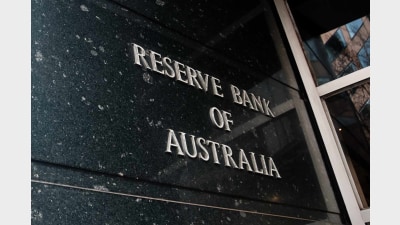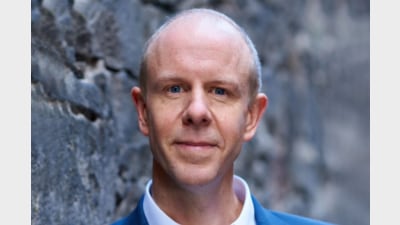Riding the technology wave


Enrique Gonzalez writes that embracing technology represents a key for superannuation funds as they seek to address an increasingly complex future.
It's no secret that the Australian superannuation industry has been placed under tremendous pressure from a variety of directions. In recent years the sector has suffered countless Government inquiries into fees charged to members, both in terms of levels and transparency. As guardians of national wealth, some of this attention is expected. In response, Industry Funds now have an opportunity to prepare for the future and end the fees debate by transforming their operating models to be as flexible and efficient as possible.
The industry is in a phase where costs have been pushed up dramatically, and they will continue to rise. A large part of this relates to the same demographic problem being faced by a number of developed nations: the baby boomers are entering retirement en masse. Given that the pensions stage of a super fund's cycle is far more complex than the accumulations stage, this has meant a sharp rise in overall complexity, with more still yet to come. At the same time, increased regulation with a focus on transparency and oversight, such as the MySuper reforms, is temporarily adding further cost pressures.
This perfect storm has left super funds in a conundrum. Existing models are already creaking under the weight of the changing environment, yet the challenge has only really just begun. Funds cannot afford to underestimate the increased complexity that will inevitably come with a retiring membership. Complexity in the form of managing risk, both longevity risk and liquidity risk, are clear examples. APRA has already sounded the alarm on the threat future liquidity risk poses to the positive cash flows previously enjoyed by funds. Add to the mixture sequencing risk, and the future becomes more challenging.
The political and regulatory conditions mean that funds can hardly address these rising complexity-related costs at the expense of existing members. Instead, it will have to be dealt with by freeing up costs elsewhere. The solution will have to be substantial: mere tweaking around the edges will not be enough to meet rising costs, maintain capacity, and cut fees substantially (by, say, 10 basis points). Combine this with Government regulation and market pressure and the urgency of change becomes clear.
Of course, it's not as though super funds have never had to cut costs before. The traditional model of cost-cutting has typically revolved around a two-pronged approach: outsourcing and squeezing suppliers. But these two tactics alone are unlikely to cut the mustard given the scale of the challenge funds face. For a start, outsourcing is no longer the panacea it was once considered to be due to the new-found regulatory focus on oversight. And there is a hard limit in terms of how much can be saved via this route. Similarly, one can only squeeze one's suppliers so far, and this comes with the downside risk of harming the quality of these services — not an acceptable risk in the current regulatory and member environment.
These approaches have had elements of success, but if super funds are to be prepared for the future an altogether more revolutionary approach is needed. Rather than looking outwards at suppliers and outsourcers, super funds need to look inwards at their business processes. Specifically, they need to ask themselves hard questions about the efficiency of these processes and whether they are still adequate for the size of the operation in question and if they are able to cater for new products.
The industry is in a phase where costs have been pushed up dramatically, and they will continue to rise.
Technology will be key to this revolution. Automation of processes has the potential to dramatically cut costs without — and this is crucial — reducing capacity or harming performance and service levels. When done correctly, automation can cut costs while increasing capacity, performance, and service levels. Valuable human resources need to be freed to manage the future instead of working on manually redundant and repetitive tasks.
The problem is that the entire funds industry — and industry funds by extension — has been plagued by endless spreadsheets and cumbersome, inefficient, manual processes from top to bottom. While this may suit (or at least not be a major barrier for) smaller funds in their infancy, it has created real difficulties in terms of scalability as funds have grown to their (in some cases) current gargantuan sizes. As volume expands faster than surface area, so too have inefficiencies multiplied a rate disproportionate to growth in AUM.
Technology and automation can help in three distinct ways. It gives an organisation autonomy over their operating model and the removal of redundant manual task instantly increases efficiency. It gives the super fund visibility and control over their data. New products are essentially the manipulation and management of data. Control the data and you control your destiny. Finally the right technology approach will allow you to modify the operating model without having to reinvest in the infrastructure.
Automation also carries benefits for funds looking to acquire scale. As things stand, the myriad of inefficient, spreadsheet-centric processes across the industry renders most funds relatively opaque, making it difficult to assess the strategic value of proposed deals. Combined with the sheer difficulty of integrating inefficient, idiosyncratic manual processes, this is a huge barrier to consolidation at present.
The technology argument has long been used by outsourcers as a justification for their business model. ‘You need us', the line runs, ‘only we can deliver the efficiencies you need as only we have the technology to achieve this. It would be too expensive for you to implement the technology in-house'. While this argument may have applied ten years ago, it no longer holds water. The cost of running technology has fallen dramatically and the operational impact has increased. No longer do organisations require floors full of blinking, flashing hardware and expensive support staff. Managed hosted services come at a fraction of the cost.
There are many analogies that could be drawn here that underscore the need to recognise the moment for change. Technology can bring efficiency while increasing capacity and quality. We are now at the point where the technology exists for operations to become more efficient and cannot be ignored for those funds wishing to control their destiny.
Enrique Gonzalez is regional product manager, APAC, for the Milestone Group
Recommended for you
High risk, high return assets will become dangerous options for superannuation funds under the Federal Government’s planned $3 million superannuation changes, writes Brad Twentyman.
Economic policy can no longer ignore the macroeconomic impacts of Australia's superannuation system and the emerging policy implications, writes Tim Toohey.
In an age where climate concerns and social consciousness dominate headlines, it’s no surprise that investors are increasingly seeking investments that align with their values, writes Simon O’Connor.
How profit-for-member superannuation funds can embed 'commerciality with a heart' and marry a member-first culture with commercial outcomes.














Add new comment